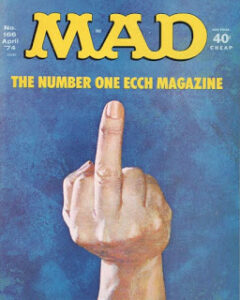
Since last week’s post I have had some time to further explore the point shooting website.
It seems the idea of using the middle finger on the trigger dates back to at least the 1800s. It was once considered to be a valid alternative for shooters. One factor for discouraging its use seems to have been the adoption of the Colt M1911. As described on this page, the index finger pressing on the takedown pivot on the frame of a M1911 can cause a malfunction. The US Army pistol manual still encourages the soldier to use his natural pointing ability, then instructs him to use the finger he naturally points with for something else!
The USMC manual on pistol marksmanship wisely tells us “A firm grip is essential for good trigger control.”and that “The pressure applied to the grip must be equal to or more than the pressure required to move the trigger to the rear.”
An interesting feature of using the middle finger on the trigger is that the hand makes four points of contact with the weapon. At the top it is held between thumb and the pointed forefinger. On the grip it is held by the two lower fingers. The pressure on the trigger is applied between these two points. Mechanically, this is quite a stable configuration.
Contrast this with the “traditional” grip using the index finger on the trigger. The bottom part of the grip is held by three fingers and pressure is applied higher up. Mechanically, that is a lever!
US Army manual FM-3-23.35 tells us “Poor shooting is caused by the aim being disturbed before the bullet leaves the barrel of the weapon.” and that “A slight off-center pressure of the trigger finger on the trigger can cause the weapon to move and disturb the firer’s sight alignment… Trigger squeeze is the independent movement of the trigger finger in applying increasing pressure on the trigger straight to the rear, without disturbing the sight alignment until the weapon fires… If pressure from the trigger finger is applied to the right side of the trigger or weapon, the strike of the bullet will be to the left. This is due to the normal hinge action of the fingers… The firer must not apply pressure left or right but should increase finger pressure straight to the rear.”
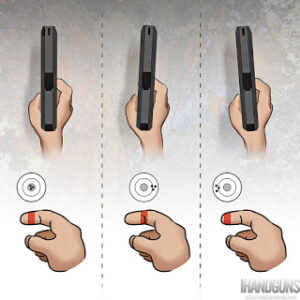
Applying trigger pressure “straight to the rear” can be problematic if you use the final section of your index finger. To be consistent the same region of the finger section must always make contact with the trigger. Some shooters try to use the crease of the finger if their finger is long enough to allow this. With some guns your index finger has to reach for the trigger at a downward angle too. This may affect moving the trigger straight to the rear.
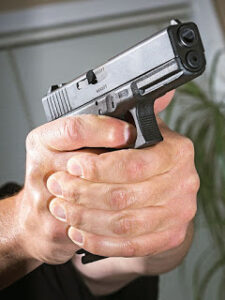
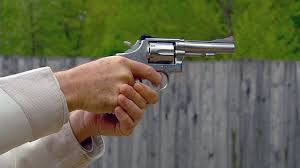
If you operate the trigger with your middle finger the point of contact will be the middle section of the second finger. This will give a more consistent trigger operation, allowing any inequalities in pressure to be compensated for.
Another advantage of using the middle finger is that the gun sits lower in the hand, reducing the effects of recoil and muzzle climb.
The middle finger is also stronger, which may explain why Ruby used his for a double action revolver.
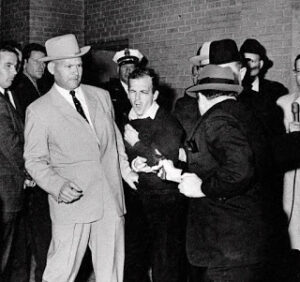
This page describes how to construct an “aiming aid” or “index guide” from plastic cornering and double-sided tape. On this page are some patents for alternate devices. An important point to grasp, however, is that these are optional. Providing you have a suitable weapon you can try this technique without any modifications or financial outlay. In absence of a firearm you can try it with an airsoft, an airgun, a toy or whatever.
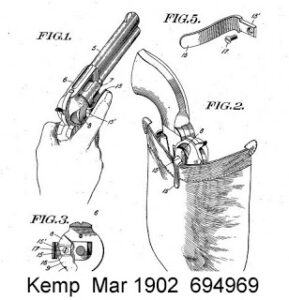

The point shooting website concentrates on shooting when there is insufficient time to use the sights. Middle finger triggering can also be used when the sights are being used. My subjective impression is that this grip causes the sights to align with the intended target a fraction quicker. Because the pressure that you are applying to the trigger may be different using this method your mean point of impact (MPI) may change. Judge the groups on their consistency rather than how close they are to the sighted point of aim. If there is an improvement in your performance you can adjust your sights later.
When I first tried this technique I noted a tendency to grasp the trigger when picking up the “weapon”. A simple solution is to adopt the habit of holding your first two fingers in a “V” sign as you reach for your weapon. Just remember “Peace to my piece”!
The Vermont UFC and police academy report on the technique included a useful list of weapons they found to be suitable. Note that this list includes rifles, shotguns and SMGs in addition to pistols. I will confess to being surprised the little Seecamp .32 was found to be suitable! This list is, of course, not comprehensive and only lists the models tried in the Vermont study. There will be other suitable models of weapon.
SIG – P228, P229, P239, P220, P230, P232, P225, P226
S&W – 4506, 3903, 39, 59, 66, 49, 1006, 4006, 622, 3000 Shotgun
Colt – 1911 (Caution), Python Trooper, Detective Special
H&K – P7M13, USP, MP5 Navy, MP5SD
Glock – 17 thru 33
Beretta – 92, 96, Cougar, SMG
Ruger – P89, Blackhawk, GP1000, Security Six
Seacampo – 32 (Seecamp?)
Remington – 870, 1187, 1100, 870 Marine, M-24
Bennelli – Super 90, M1
Ithica (Ithaca)- Model 37
Mossberg – 500 Series
USN-SEAL – 300 Win. Mag. Sniper rifle
US Military:
– M16A1 @ 300 meters
– M14 @ 500 meters
– M21 @ 500 meters
– M1 @ 300 meters
– M24 @ 700 meters
S&W – 4506, 3903, 39, 59, 66, 49, 1006, 4006, 622, 3000 Shotgun
Colt – 1911 (Caution), Python Trooper, Detective Special
H&K – P7M13, USP, MP5 Navy, MP5SD
Glock – 17 thru 33
Beretta – 92, 96, Cougar, SMG
Ruger – P89, Blackhawk, GP1000, Security Six
Seacampo – 32 (Seecamp?)
Remington – 870, 1187, 1100, 870 Marine, M-24
Bennelli – Super 90, M1
Ithica (Ithaca)- Model 37
Mossberg – 500 Series
USN-SEAL – 300 Win. Mag. Sniper rifle
US Military:
– M16A1 @ 300 meters
– M14 @ 500 meters
– M21 @ 500 meters
– M1 @ 300 meters
– M24 @ 700 meters
In short, you have nothing to lose in trying this technique. If you do not like it or it does not suit your shooting style then at least you tried it out before you decided, unlike some of its critics. If you find it better/ easier, you have gained! To paraphrase Bruce Lee: “Absorb what is useful, discard what is not”.
It would be nice to see using the middle finger included in firearm course as an option. It would also be nice if more firearms incorporated an index guide into their design. A simple groove or a narrow ledge between the slide or cylinder and the frame would suffice.
Another Option?
Fairbairn and Sykes “Shooting to Live” includes the following text on page 19:
“On taking the pistol in the hand, we recommend, as an aid to accurate pointing, that the thumb be fully extended and pointing forward in the same plane as the pistol barrel.”